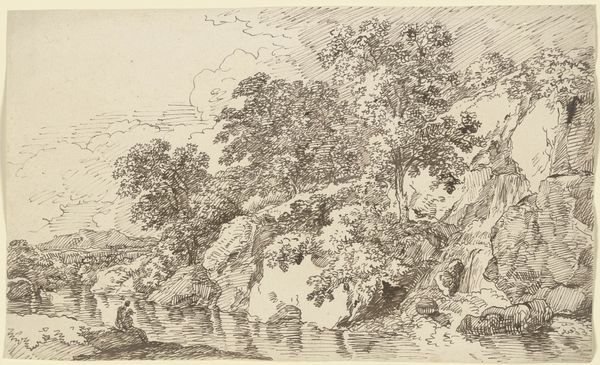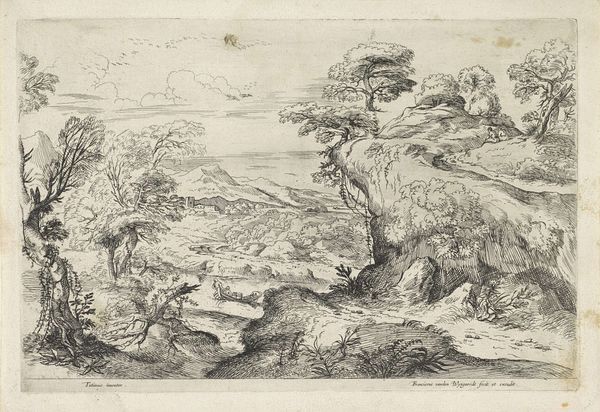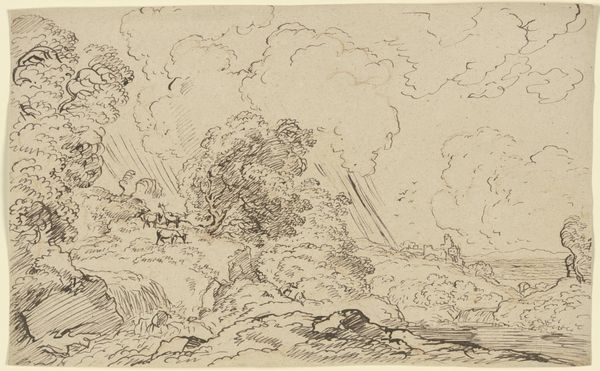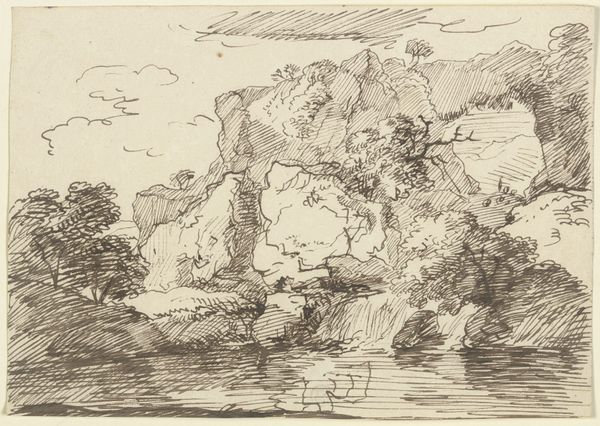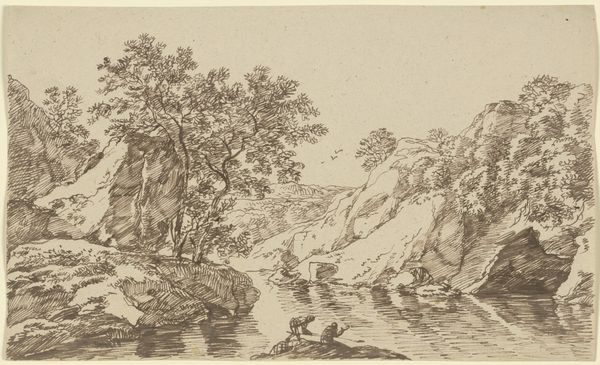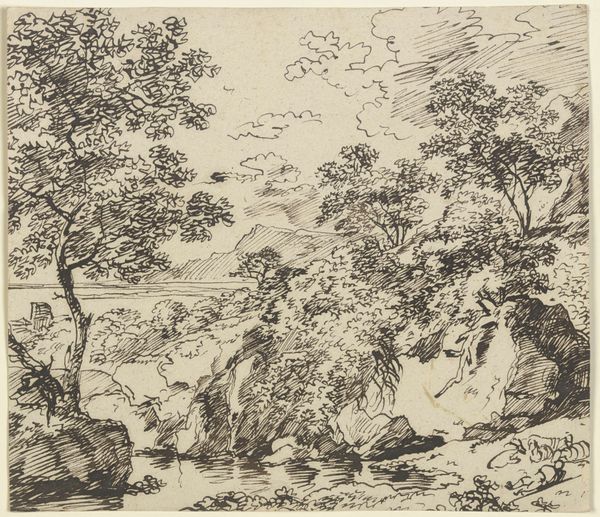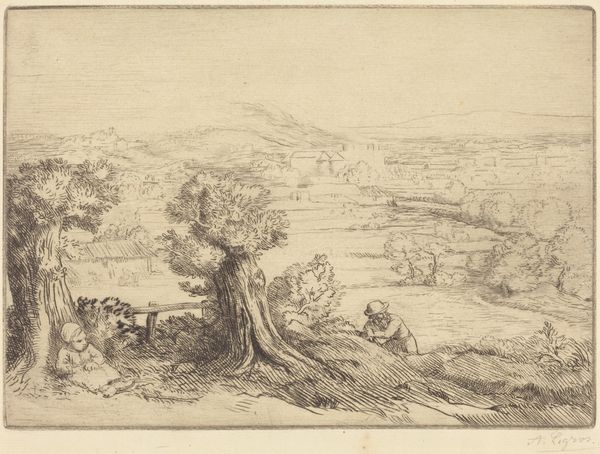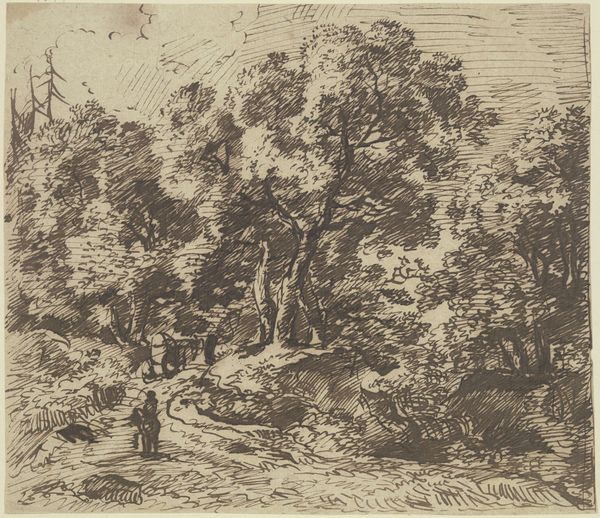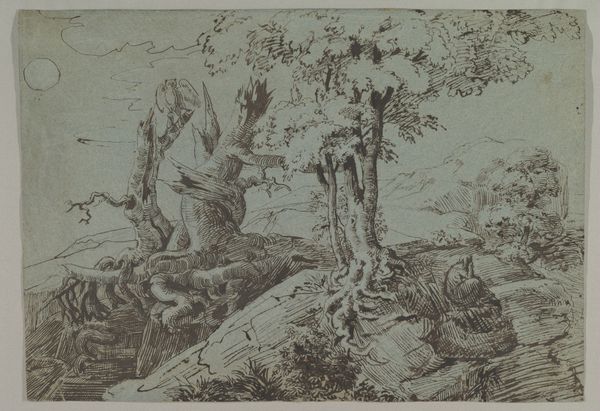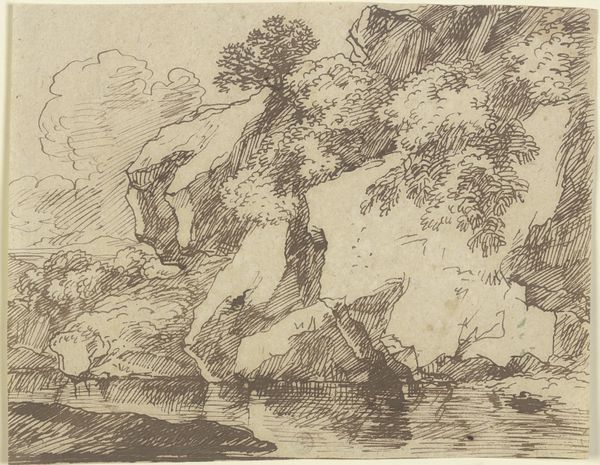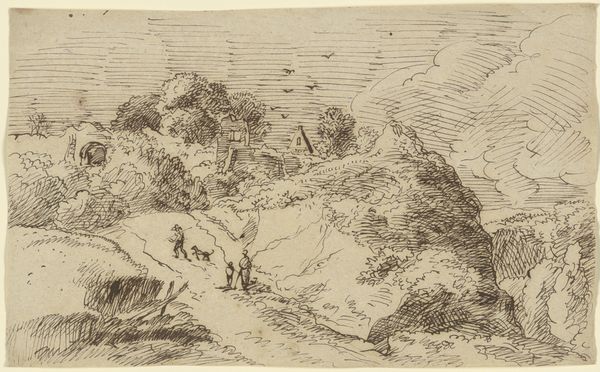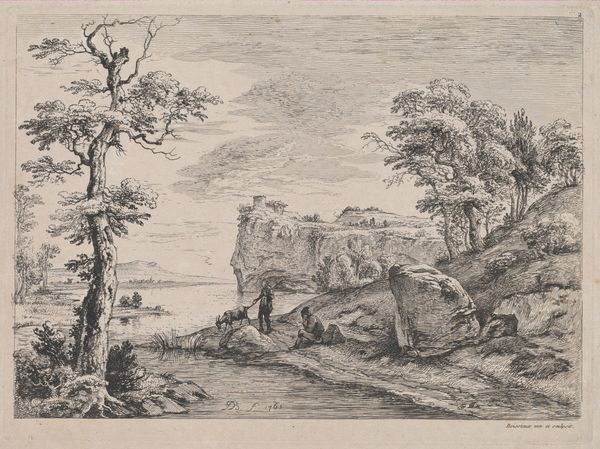
drawing, etching, ink
#
drawing
#
etching
#
landscape
#
etching
#
form
#
ink
#
15_18th-century
#
line
#
realism
Copyright: Public Domain
Franz Kobell rendered this rocky landscape with water and sparse vegetation in pen and brown ink, sometime around the turn of the 19th century. During this period, in Germanic lands, we see the rise of a new kind of art and literature that romanticizes unspoiled nature. Look closely at the way Kobell uses shadow and light to create a sense of drama and awe. This aesthetic chimes with the era's broader cultural and intellectual trends, such as the rise of nationalism, which often looked to the landscape as a source of national identity. The image can also be seen as a commentary on the social changes brought about by the Industrial Revolution. As cities grew and factories sprang up, many people felt a sense of alienation from the natural world, and artists like Kobell offered an idealized vision of a simpler, more harmonious existence. To understand this artwork better, one might research the cultural history of landscape painting in Germany, the rise of Romanticism, and the social and economic changes of the Industrial Revolution. These kinds of insights can help us to appreciate the complex ways in which art reflects and shapes the world around it.
Comments
No comments
Be the first to comment and join the conversation on the ultimate creative platform.
